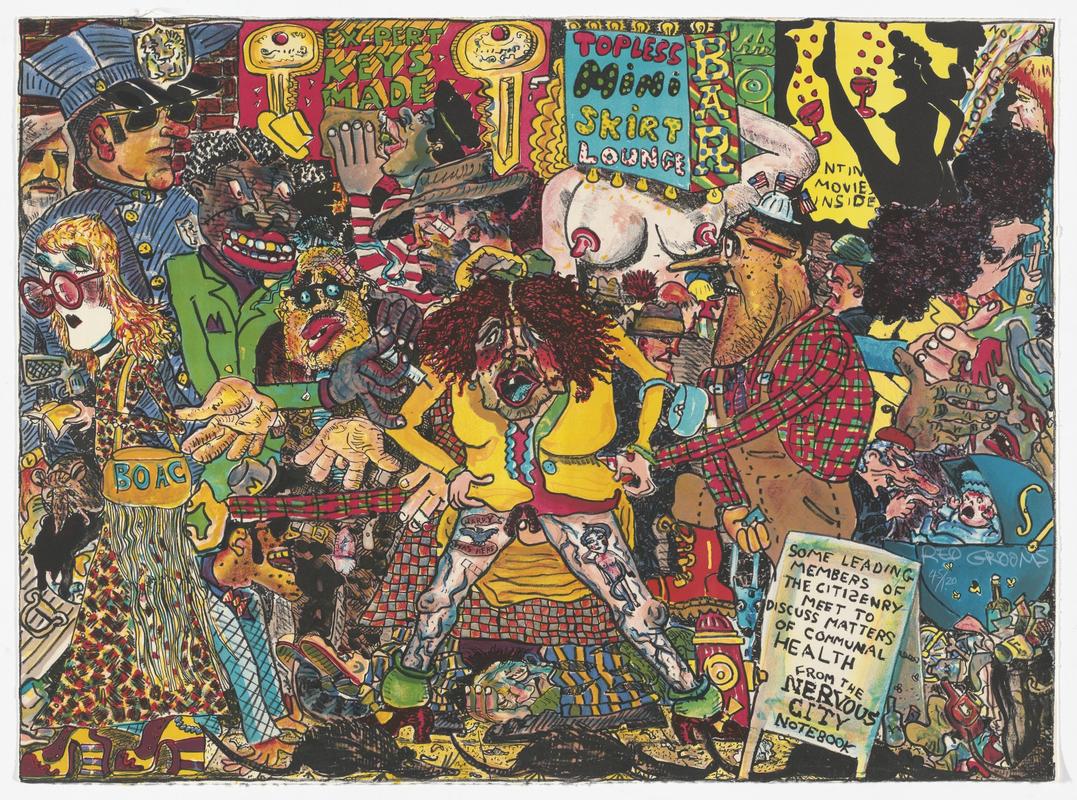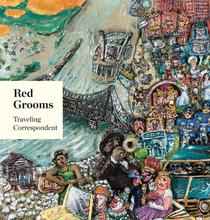More about Nervous City Street Scene
- All
- Info
- Shop

Sr. Contributor
The charm of a Red Grooms artwork is that it’s like a page lifted out of a “Where’s Waldo?” book, but on acid.
New York, New York, it’s a hell of a town. Except I don’t think Frank Sinatra meant that it was actually from hell. For Red Grooms, New York was neither glitzy nor glamorous. Instead, it was a fascinating, rumbling ruckus of a city that could shake the best to their very core. This was the reality of New York in the 1970s, and Grooms gives us a glimpse into what this unfortunate reality was really like. Forget classy nights out on the town. This New York was a nightmare more akin to the Dresden, Germany that Ernst Ludwig Kirchner knew.
Be assured that Red Grooms knew a thing or two about New York City. He moved to New York in 1959 and has been working out of the same studio in TriBeCa since 1969, way before the neighborhood got its trendy name and just in time to live through the hardscrabble ‘70s. Grooms looked to a city, filled with violence, anger, and crime as an endless source of inspiration for his artworks. While some works are lighthearted vignettes of the hustle and bustle, other works capture the crime and corruption that could be found in the city.
These fine examples of contemporary citizenry tell us all we need to know about what New York was actually like. Sure, there were hipsters and boho hippies looking to find excitement, but there were also plenty of addicts, prostitutes, and homeless people, all victims of a vicious system that left them behind. Rather than shying away from the disturbing details of urban life, Grooms paints them in their near-psychedelic glory.
The work’s garish display of debauchery and anxiety is an unflinching look at the reality of contemporary New York City. As with Berenice Abbot’s photographs of New York, Red Grooms also illustrates the hyperreal. However, whereas Abbot explores the menacing nature of the banal, Grooms elicits the nervous energy of trying to safely navigate the streets of Manhattan. The everyday is not just strange for Grooms – it’s freaking terrifying. This work is a complete barrage of the senses, sending you into sensory overload with a mere image. Grooms achieved such anxious highs perhaps because of his beginnings as a Happenings performer. He participated in and staged his own experiential performances alongside artists like Claes Oldenburg and Jim Dine, which may have laid the groundwork for the somewhat-off putting nature of his later lithographs.
Sources
- Artnet. “Red Grooms.” Artists. http://www.artnet.com/artists/red-grooms/. Accessed 16 April 2020.
- Baker, Kevin. “Welcome to Fear City.” The Guardian. 18 May 2015. https://www.theguardian.com/cities/2015/may/18/welcome-to-fear-city-the…. Accessed 16 April 2020.
- Miller, M.H. “Art Is Fleeting, but Red Grooms Is Forever.” Arts. The New York Times. 6 September 2018. https://www.nytimes.com/2018/09/06/arts/design/red-grooms-marlborough-t…. Accessed 16 April 2020.
- National Gallery of Art. “Red Grooms.” Collection. Artist Info. https://www.nga.gov/collection/artist-info.2542.html. Accessed 16 April 2020.
- Stein, Lisa. “Red Grooms’ artwork: A graphic display of high-spirited visions.” Chicago Tribune. 2 February 2002. https://www.chicagotribune.com/news/ct-xpm-2002-02-03-0202030383-story…. Accessed 16 April 2020.












